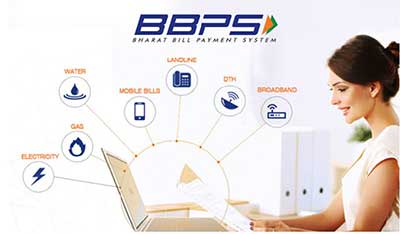Date: 17/12/2022
Relevance: GS-3: Science and Technology- developments and their applications and effects in everyday life.
Key Phrases: Payment System, Utility Bills, Loan Repayments, Reserve Bank of India, NPCI, Non-Banking Entities IMPS, NEFT, UPI, NBFCs.
Why in News?
- RBI Governor Shaktikanta Das announced the expansion of the scope of the Bharat Bill Payment System (BBPS), which will include all categories of payments and collections.
- Currently, it handles recurring bill payments for merchants and utilities and does not provide the service to non-recurring bills.
- It also does not accommodate bill payments or collections such as payment of fees for professional services, education fees, tax payments, rent collections, etc. for individuals even if those are recurring in nature.
What is the Bharat Bill Payments System?
- It is an integrated bill payment system or a platform that acts as a connect between various billers and users.
- The Bharat Bill Payment System offers customers the convenience of payment by cataloguing various utility providers under one platform.
- It acts as a central reference for a customer who wants to make different payments, whether utility bills, loan repayments, FasTag recharge, etc.

Who are the stakeholders in the BBPS ecosystem?
- BBPS was conceptualised by the Reserve Bank of India in 2013 and is a product of the National Payments Council of India (NPCI).
- It was launched as a pilot project in 2016 and went live a year later. By 2019, BBPS on boarded all recurring payments.
- There are two key components in the BBPS system —
- Bharat Bill Payment Central Unit (BBPCU)
- Bharat Bill Payment Operating Units (BBPOUs)
- The BBPCU is NPCI, which lays downs the operating procedures and standards for BBPS whereas BBPOUs adhere to the rules set by BBPCU. They are the banking and non-banking entities that handle the payments load.
- Then, there are billers (utility providers) and agents, either as institutions or individuals, who provide services primarily on the collection side, to BBPOUs.
What purpose does it serve?
- It offers convenience and access irrespective of the nature and form of payment. For instance, as a customer, one may have certain utilities such as phone, electricity, gas, and water bills to pay on a monthly basis.
- Under BBPS, all these utilities are listed on a single website. One must choose the payments to make and that will take him to the vendor website for processing. One doesn’t have to go to each website separately to make the payment.
- BBPS supports IMPS, NEFT, UPI, cheques, wallets and even cash.
Let’s Understand with an example
- For instance, if a gas bill has to be paid in cash, the website provides the nearest BBPS collection point.
- Unlike the branch office of the gas agency which may be open from 9 am to 6 pm, the collection point may be available for longer hours. You pay cash to the person at the counter and a receipt is generated.
- It acts as a one-point-stop for all bill payments. Cheques can also be remitted through these agents.
- However BBPS is only a platform. If a transaction has a settlement duration of T+1 or T+2, as with UPI or cheque payments, BBPS cannot bypass the time taken for payment processing. It only facilities making and concluding a payment in a common platform.
How has the growth in BBPS been over the years?
- There are 33 active BBPOU billers and 66 BBPOU customers. This covers most banks and large NBFCs, particularly those relevant for payments.
- There are 19 categories of billers, which include electricity, insurance, water, and municipal taxes, piped gas, housing societies, credit cards, loan repayments and prepaid mobile phone cards.
- As of November, there are 20,519 live billers (or utility providers) listed in BBPS. The quantum of transactions has risen multi-fold in four years.
What has changed for the BBPS?
- The central bank has authorised the Bharat Bill Payment System to process cross-border inbound payments to facilitate payment of utility bills by non-resident Indians (NRIs).
- NRIs can now directly make payments for bills on behalf of their families from abroad.
- Earlier, foreign inward remittances received under the Rupee Drawing Arrangement (RDA) were allowed to be transferred to the KYC compliant beneficiary bank accounts through electronic mod, such as, NEFT, IMPS, among others.
- The platform will be extended to all payments and collections, including those that are non-recurring, such as professional service fee, tax collection and rent payment
Conclusion:
- The recent changes will provide a big boost for digital payments in India because more and more avenues will become available, enabling digital collections on both the domestic and international markets.
- By supporting cross border inward remittance under BBPS, NPCI takes another significant step into making payments convenient for consumers.
- This will boost Fintech innovations enabling instant cross border remittances personalised to enable BBPS payments for the Indian diaspora abroad and start-ups mushrooming around this opportunity.
- Opening up the domestic payments network for cross border payments directly contributes to the much-needed foreign currency reserves of the country.
Source: Business Line
Mains Question
Q. Bharat Bill Payment System is a big boost to digital payment system. Discuss ( 150 words)






















